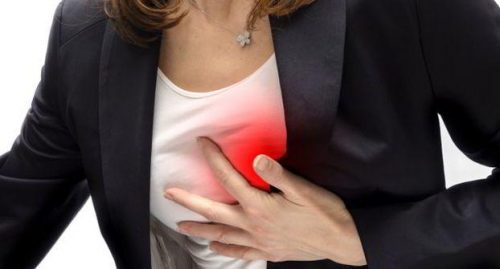February is traditionally celebrated as the love or heart month; thus, the American Heart Association aptly considered this opportunity to raise awareness of the cardiovascular disease among women. Every year, the National Wear Red Day is celebrated all over the country as part of the strategy to make cardiovascular health as a priority. The numbers describing the seriousness of this condition is already enough to make you reconsider taking the steps towards optimum heart function.

As of 2017, heart disease is the leading cause of death among women, with 1 in 3 deaths recorded every year. This just shows that approximately one woman dies of heart-related condition every minute. To make matters worse, only 1 in every five women believe that medical problems about the heart are their most significant health concern. It is the lack of information that leads to the increased morbidity and mortality rates of women concerning cardiovascular disorders.
Cardiovascular Disease
Diseases of the heart and blood vessels are categorically named as cardiovascular disorders. Examples of medical conditions are hypertension, myocardial infarction or heart attack, congestive heart failure, aneurysm, rheumatic heart disease and other infective heart diseases, and stroke. Though stroke can be neurological, the disease is caused by a failure in blood circulation to brain secondary to hardening and narrowing of blood vessels, sluggish blood flow, and formation of blood clots in the blood vessels; thus, making it as one of the fatal forms of cardiovascular conditions.
Signs And Symptoms
Some forms of heart problems can be deceiving in nature. Hypertension for one is termed as a silent killer in most Americans. You just don’t know until it hits you. Symptoms will depend on the type of heart disease, but the common ones include pressure or crushing sensation in the chest, numbing pain or discomfort in the left shoulder extending to the whole arm, in the jaws and back portion of the body. There will also be shortness of breath, feeling a light-headed, cold sweat and a squishy feeling that you might want to vomit. Clinical parameters or objective information that will suggest cardiovascular condition will comprise of high blood pressure reading, increased levels of bad cholesterol in the blood, and malformations or problems with the structure of the heart or blood vessels.
Risk Factors
Smoking is the leading factor in cardiovascular diseases. The nicotine and other noxious substances in cigarette and tobacco smoke lead to vasoconstriction or narrowing of blood vessels. With a narrowed blood vessel, blood circulation is compromised diminishing appropriate oxygen transport to the different parts of the body. Lifestyle behaviors are also linked to heart problems such as lack of sleep, sedentary activities, prolonged sitting, eating too much saturated fat, carbohydrates and salt-laden foods, excessive drinking of alcoholic drinks, and always in constant stress.
Prevention
Some cardiovascular conditions are hereditary. If this is the main reason why you have one, it cannot be altered. Nonetheless, you can still do something to make your life more meaningful and functional.

Also, most heart problems are preventable. Modification of one’s lifestyle and shifting gears towards achieving a healthy mind and body can alter the course of the disease. If you are already smoking, it is best to consider quitting the habit. Don’t even think of changing to vaping because recent studies show that vape smokes are also detrimental to one’s health. Be mindful of your eating habit. Include more vegetables, fruits, and omega-3 in your diet. Avoid meals high in saturated fats. Cook your meals either by boiling, grilling, and broiling. Frying foods is not advisable because of high-fat content. Get involved in regular exercise. If you don’t like exercising, try doing things that will allow physical exertion and encourage fitness. Hiking, mountain climbing, rowing, running, or swimming are some of the suggestions that you can try. Lastly, get examined by your primary care provider to determine your vital signs.